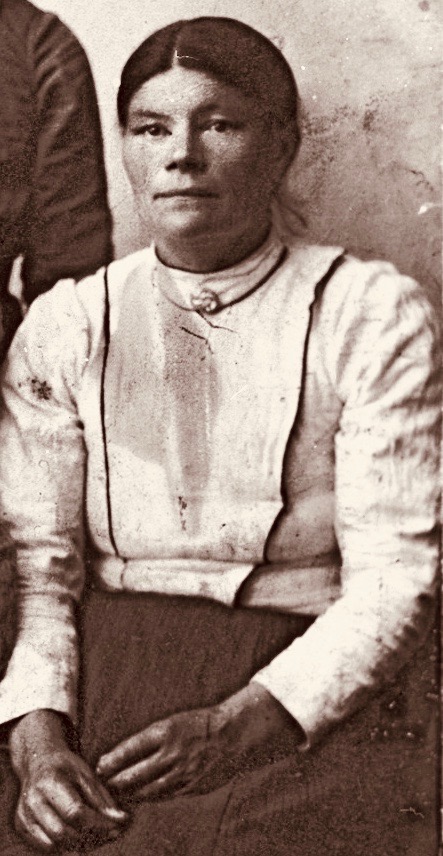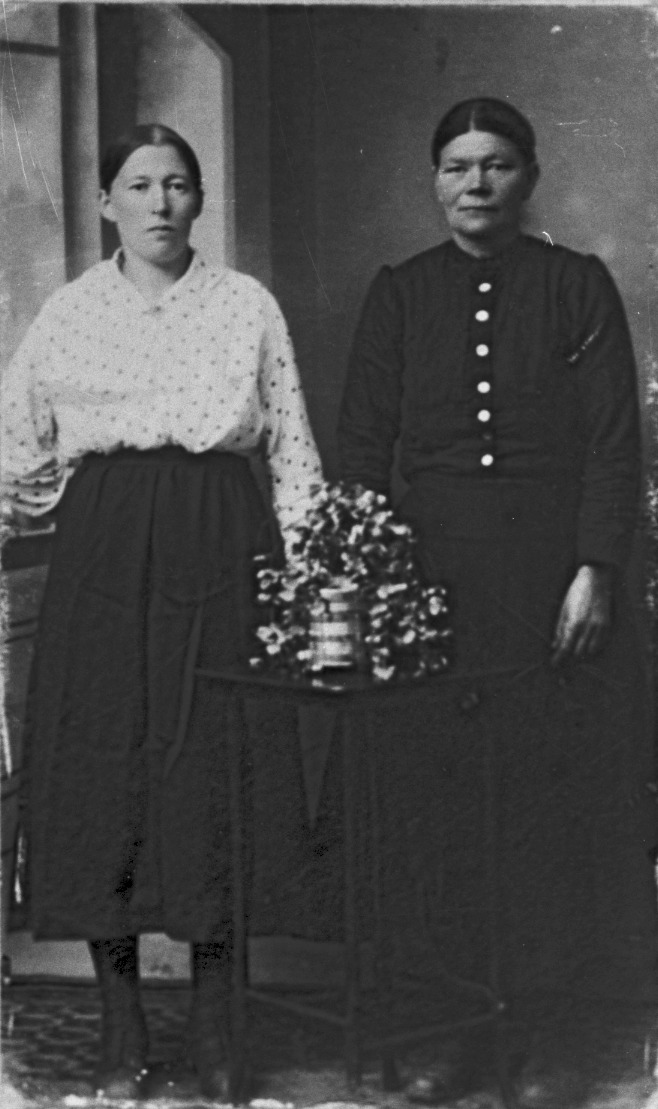
Alette Pedersen. Foto: Nord-Troms museum
Stor Aletta
She could butch, row, sew, braid, trade, organize, heal and act as a midwife. Alette Pedersen in Olderdalen, also called Stor-Aletta, has been described as an indispensable woman in her time.
Alette Pedersen, Olderdalen (1872 – 1942)
If she had been today, she would have been famous, but back then everyone was used to her, so…. there was nothing that was… that was unusual. (Astrid Olsen)
Alette Pedersen lived alone in a small house by the beach in Olderdalen. She never married, but had a foster daughter when she was well into adulthood. She was the one people used at birth, illness and death. She could blow away sickness, she looked after and sewed burial clothes for the dead. It was said that if you saw Alette with the white scarf on her head, a new world citizen was on its way.
Alette had a big heart and was always in business. She traveled around at markets and sold goods that the women in the village sent with her. She traveled with the local boat to Tromsø to sell potatoes and meat for the poor, and rowed across the fjord to the priest to register children, report marriages or deaths.
Skilled at sea
It was said of Alette that she was more than a man. She did all the work on the farm, but was also a skilled fisher and boat driver. Alette was called when animals had to be slaughtered or castrated. Her ability to heal was known. Alette could both see and hear more than others.
Alette fought to improve the rights and conditions of women.
She spoke up, also against authorities. When the municipality’s teacher in 1902 complained in a newspaper article, that education and the Norwegian language were in a bad state in Olderdalen, she got involved in a heated newspaper debate.

Sandra Albrigtsen og Alette Pedersen, 1921. Foto: Nord-Troms museum.
Avisdebatt 1902-1903
Fra Olderdalen, Nordlys, november 1902, lærer A, pdf
Svar til Fra Olderdalen, Nordlys, desember 1902, Alette med flere, pdf
Svar til Alette med flere, Nordlys, januar 1903, lærer A,pdf
Svar fra Alette til A, Nordlys, januar 1903, fra Alette,pdf


